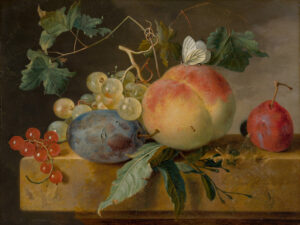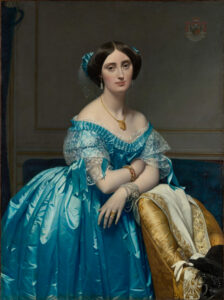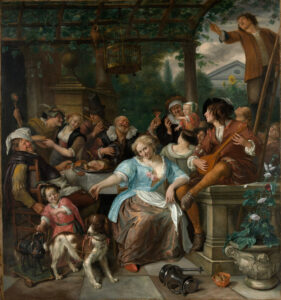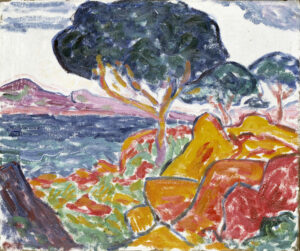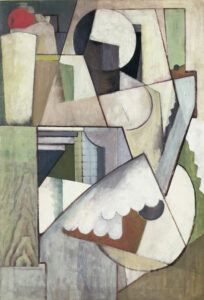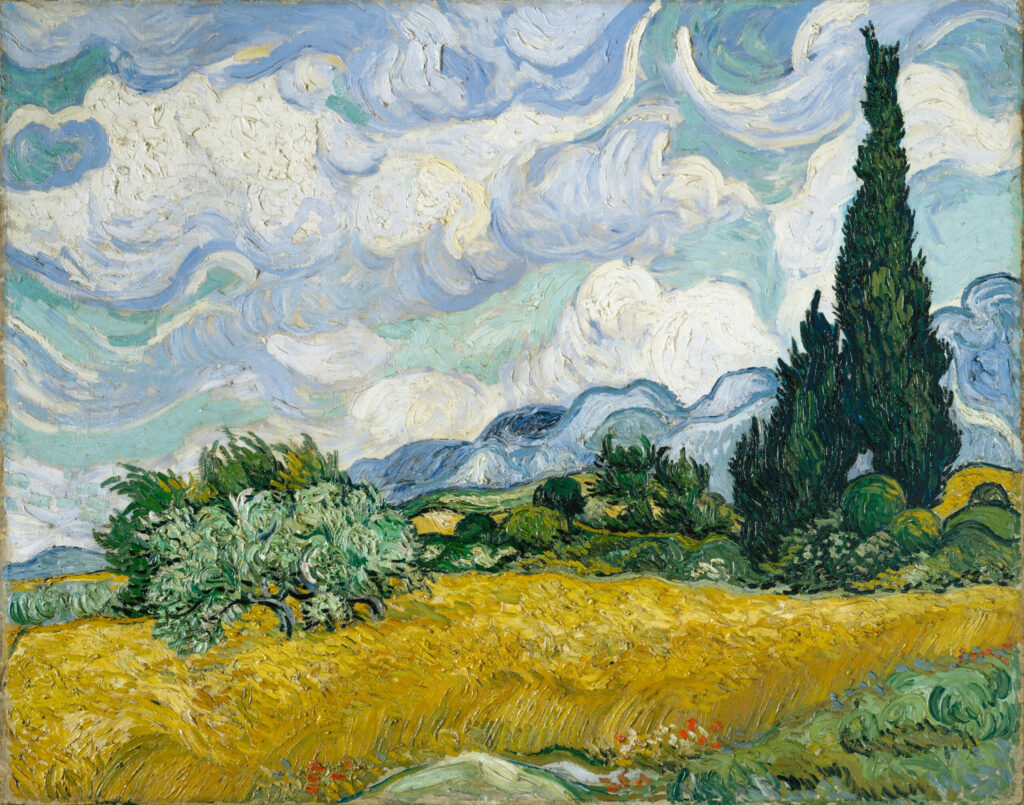
Saint-Rémy-de-Provence, June 1889. Confined to the hospice following his crisis in Arles, Vincent van Gogh sets up his easel facing the Provençal countryside. The sun beats down on the wheat fields. A dark cypress rises like a green flame.
A Landscape Vibrant with Color
The eye is immediately drawn to the intense gold of the ripening wheat field. Van Gogh applies the paint in thick, almost sculptural strokes. Each brushstroke pulses with energy. To the left, pale green bushes contrast with the cypress soaring skyward. This tree is emblematic of Provence, and its dense foliage, rendered through vigorous impasto, captures the Mediterranean light.
Above, the sky swirls in white and blue spirals. The clouds roll like waves, creating a hypnotic movement. Van Gogh mixes colors directly on the canvas. Blue, white, and turquoise merge into living matter.
A Work of Asylum and Resilience
This painting was born during a critical period. Since May 1889, Van Gogh has been voluntarily staying at the psychiatric asylum in Saint-Rémy. Between episodes, he paints the surrounding nature with fierce determination. The cypress becomes his obsession. In his correspondence with his brother Theo, Vincent describes this canvas as one of his “best” summer compositions. The generous impasto recalls Adolphe Monticelli, a Marseille painter he admired.
Van Gogh, the Tormented Artist
Vincent van Gogh (1853-1890) revolutionized painting in just ten years. A passionate autodidact, he developed a unique style characterized by brilliant colors and rich texture. His stay in Saint-Rémy produced some of his major works, despite his mental suffering.
💭 Facing this monumental cypress, what relationship do you have with the trees that inhabit your familiar landscapes?
About this Work
- Wheat Field with Cypresses, Vincent van Gogh, 1889, The Metropolitan Museum of Art, New York
- Oil on canvas, 73.2 × 93.4 cm (28 13/16 × 36 3/4 in.)
- https://www.metmuseum.org/art/collection/search/436535


